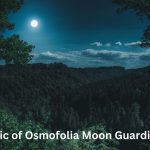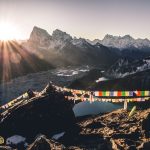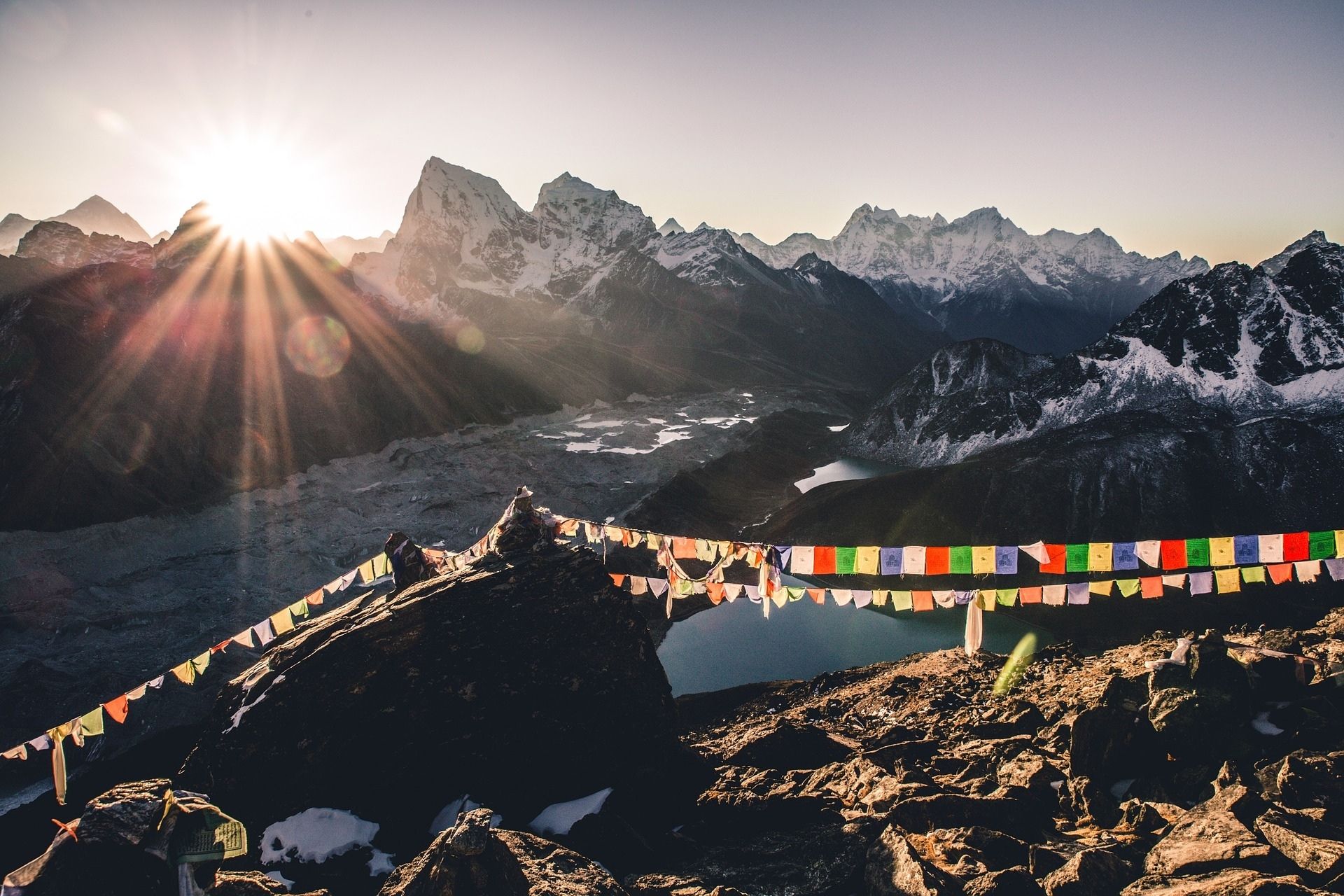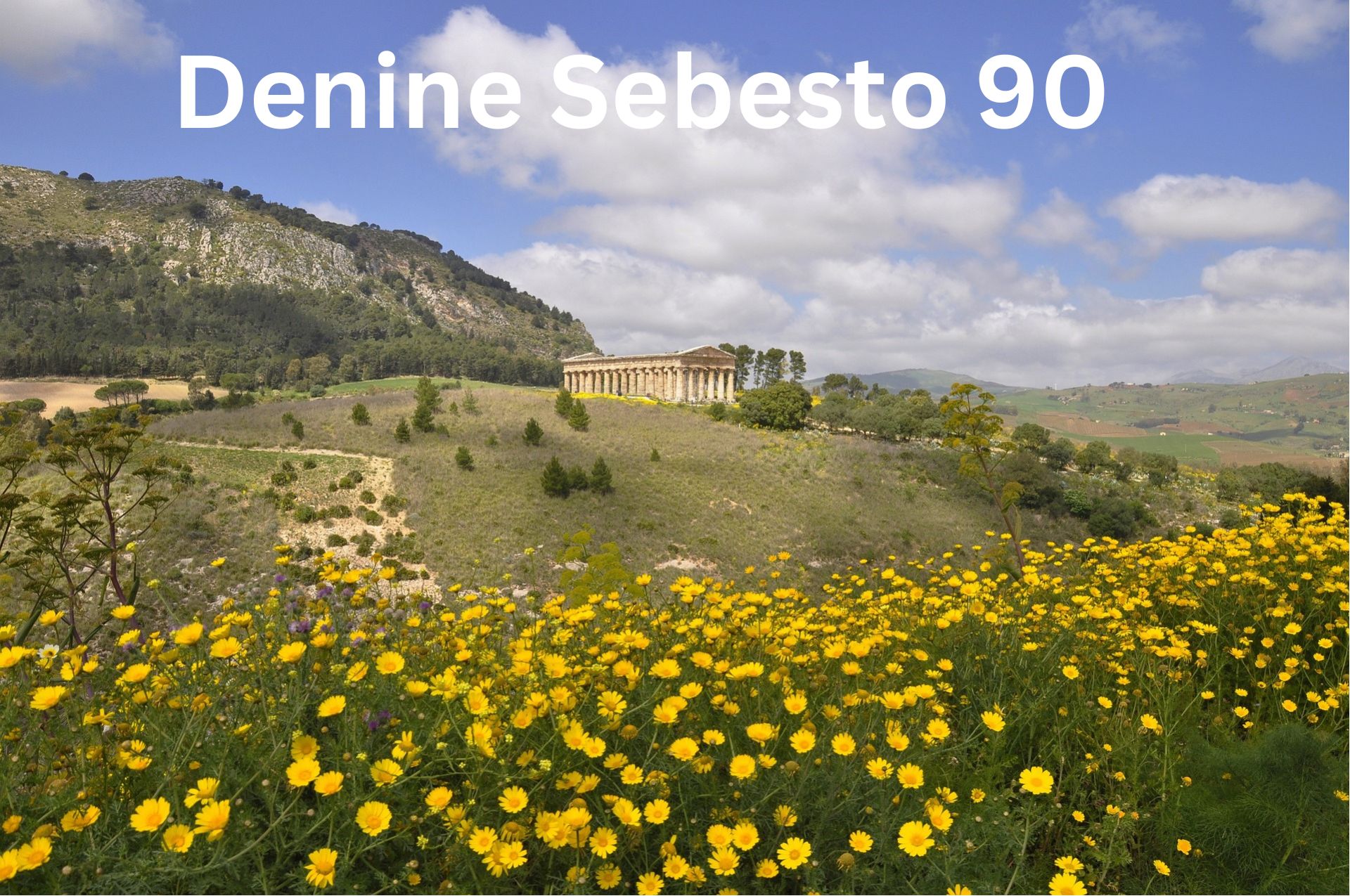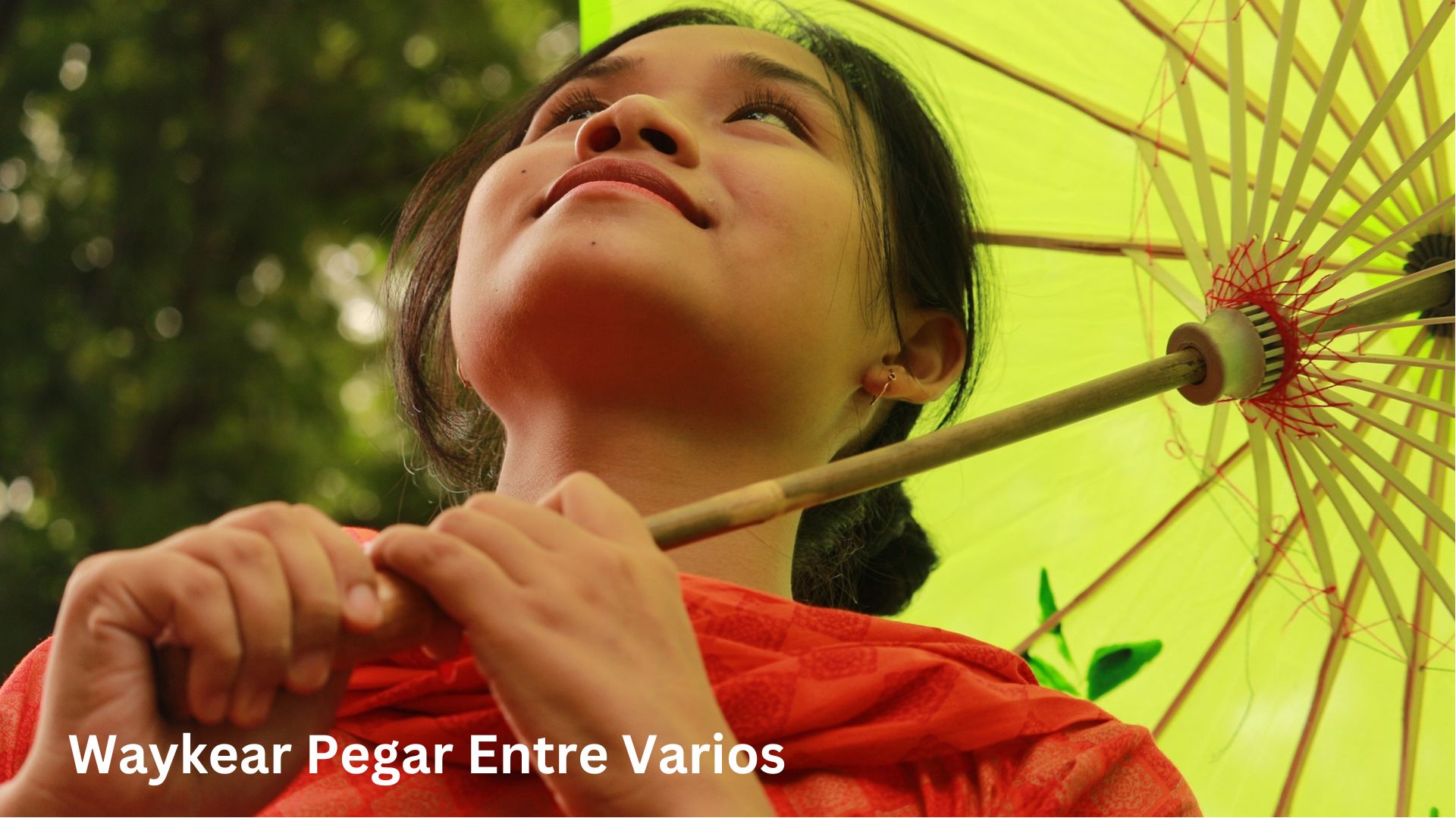One of the finest and absolutely a must do adventure in whole wide world ever is the Everest Three Pass Trek, where trekkers can get into exploration of magnificent Everest region with three high passes. It is as physically demanding as it is spiritually — a deep dive into the very roots of the Himalayas filled with awe-inspiring scenery and cultural intimacy. The adventure takes trekkers over high Himalayan passes across some of the most rugged beauty and remote villages that lay alongside the routes over Renjo La, Cho la, and Kongma la, three iconic passes in the Everest region.
It all starts in Lukla, the buzzing entry point to the Everest region. Trek into the Khumbu Valley, passing through the colourful village of Namche Bazaar and on towards the Gokyo Lakes. The first of the three passes is called Renjo La, which boasts incredible views of Everest minus Makalu and the other mountains that are littered throughout for miles. While the hike to Renjo La is no easy feat, the breathtaking views from the top are absolutely rewarding. From Renjo La, the trekking leads to Cho La Pass, a slightly more technical challenge with its glacier crossing. With stunning vistas of Everest and the Khumbu Glacier, conquering the icy trails of Cho La is a badge of honour worn by trekkers. The last of those three passes, Kongma La (5,535 m / 18,159 ft.), is the highest one and gives view to several major peaks including Khumbu Icefall, Nuptse, Lhotse and Pumori.
Using aspect of that, the success of this challenging trek is doing things required to acclimatise, being in shape and a good guide that knows how to navigate through the tough landscape is going to have a profound impact on comfort levels. Enter stage right Sherpas who serve a necessary purpose. We will not only learn the ways of a sherpa who all are expert mountaineers, but also gain an understanding of the area/ culture/ history and nature. They guide trekkers through the high-altitude passes with ease, and knowledge of the local culture enhancing their journey as well. They help with logistics, carry gear and advise on how to acclimatize and fatigue at extreme altitudes; the vital support of Sherpas.
Enthusiasts make their way from one pass to the next, traversing scenes of lush alpine meadows and tranquil lakes, glaciers, and steep mountain ridges. On the journey, trekkers sleep in local teahouses where they are served plentiful meals and a glimpse into the spirit of Sherpa families who share their traditions and lifestyle along with their ties to the mountains. This is a window onto Sherpa culture and Buddhist tradition, as well as the very real lifestyle of living in high Asia.
The Three Passes Trekking are an easy physical and mental challenge. It is a trek that requires some preparation and respect for the difficulties of the high altitude as well as rough hike itself. However, for the housed who are willing to reach out their selling pentagons, the rewards are phenomenal. Traversing through some of the highest passes on earth, with deeply humbling and breathtaking glimpses into the lives of one of our planet– more isolated and awe inspiring populations – experiencing Everest not just at it’s summit but from a range of incredible vantage points is an experience you never dare forget. Its a once in the life time adventure with physical challenge, nature and culture that leads trekkers to best memories ever.
Everest Three Passes Trek: Introductory discussion
One of the most exciting and strenuous trekking routes, Everest Three Passes Trek takes you to some of the remote areas of breathtaking views. This adventure in Nepal’s Khumbu holds a special place with the opportunity to explore that part of the Everest region that’s not typically trekked between the base camp. The name itself says it all, the trek takes you across three high altitudes passes namely Kongma La, Cho La and Renjo la. Every pass challenges you physically and mentally but rewards with the highest views of the world including Mount Everest, Lhotse, Makalu and Cho Oyu. Along with the amazing views, trekkers experience the culture of the Sherpa, whose villages and monasteries line the route. It is more than a tough walk — it is an embrace of the land, and the spirituality of its people. The Everest Three Passes Trek is a classic adventure for those looking to do a little more than just the base camps, whether that means crossing high Himalayan passes or escaping the main valley into wild and serene highland.
What is the Everest Three Passes Trek?
If you are an experienced trekker seeking for a route that is outside the normal trekking trails in the Everest region, then this is the trek for you. It will take to all three of Everest Passes! Although the Everest Base Camp trek is not a lengthy hike and has both amazing views and famed paths, the Three Passes Trek yields a more off-the-beaten-path, rough-and-tumble (and challenging!) mix of terrain. This trek allows trekkers to see an untouched side of the Everest region, along with your added bonus of passing over three of the most beautiful and highest passes in the Himalayas. Apart from the beautiful panoramic view of the highest peaks in the world, this trek combines that sense of accomplishment with adventure. Renjo La, Cho La and Kongma La make the trek a little more arduous, and redeeming when trekkers have it crossed off their list — perfect for those who enjoy physical challenges. To make things even richer, trekking through tiny villages and engaging with Sherpas richens the experience. Even though we seemed to find half the population of trekkers densely covering the Everest Base Camp route, the Three Passes Trek provides a far quieter more immersive experience in one of natures most spectacular regions on earth. This is one of those treks that we do for the views, for the challenge and because it feels nice to get away from everything and be in the mountainsThe Everest Three Passes Trek is something special.
The Three High Passes in Brief: Kongma La, Cho La and Renjo La
What describes the Everest Three Passes Trek is crossing three high mountain passes. Many trekkers argue that the first pass, Renjo La (5,360 meters / 17,590 feet), is the most beautiful of all three and will experience stunning views of Everest to Makalu and Gokyo Lakes. The ascent towards the Renjo La is not that much difficult, steep but doable, with scenic grandeur atop. From Renjo La, wards trekkers progress to Cho La Pass (5,420 meters / 17,782 feet), which poses a somewhat technical challenge with glacier crossing. Crevassed in places, the crossing involves caution and proper gear, but is followed by a huge view over Everest, Lhotse and the Khumbu Glacier. Kongma La (5,535 meters / 18,159 feet the highest and hardest of the three passes It’s a long, steep hike up to the top where you can see out over The Khumb valley and all of the surrounding peaks including the Khumbu Icefall as well as Nuptse. All these passes are quite different from each other when it comes to terrain, altitude and difficulty level but combined they offer one of the most spectacular trekking experiences with glimpses of nature, adventure and joy of realizing small parts of conquering Himalayas.
Essential Gear And Packing List For The Trek
The Everest Three Passes Trek is a challenging high-altitude trek and must be prepared well, especially regarding the gear. Packing your bag properly is critical for many reasons such as safety and comfort. Must haves include a solid fitting backpack, warm clothing and layering systems to regulate the varying temperatures. A pair of sturdy, ankle-supporting trekking boots are needed for footwear to prepare yourself when climbing an upward slope over rocky terrain. For this reason, make sure you bring a good sleeping bag (minimum -15°C or 5°F rated) to stay warm in the teahouses or camping. You will need one due to the altitude. Besides the above equipment, you will need a headlamp, hiking poles, some sort of water filter (or purification tablets), first aid kit and sunscreen. To cope with fatigue and retain energy during the trek, carrying enough high-energy snacks and electrolytes is important as acclimatization holds the key. The trek will be high and hence, gear to combat the cold like thermal gloves, down jacket and a hat are necessary. Last but not least, bring a good camera to get some beautiful photo ops of the views littered along the drive! This is due to the remote nature of the trek where cell coverage can be spotty so it would be best if you also bring along a satellite phone to keep on hand for emergency use. Trekking appropriately equipped to experience this challenging adventure safely and spend an unforgettable vacation.
Strategies for Acclimatizing to High Altitudes
Everest Three Passes Trek require good acclimatization since it is above 5,000 meters (16,404 feet), altitude sickness becomes an increasing risk. This is especially important because the body must adapt to decreased oxygen availability at altitude, and success in preventing high-altitude illnesses — acute mountain sickness (AMS), highaltitude pulmonary edema (HAPE), or high-altitude cerebral edema (HACE) — depends on acclimatization. The key is to go slowly so your body can adjust to the changes in air, pressure and oxygen. Acclimatization days are actually a place where most of the itineraries on Everest Three Passes Trek keep their trekkers at one elevation for 1-3 days to allow the acclimatization process. On the days when you are resting, it is good to do some short ascents to higher areas and descend again to lower altitudes, these are known as acclimatization half-days. The other things that really matter are drinking plenty of water, consuming energy dense foods and sleeping enough. Should the symptoms of altitude sickness arise, such as dizziness, nausea, or headaches, then it is necessary to go lower in altitude immediately. A trip to the doctor before the trek is also recommended in order to confirm that you are able to do trekking at high altitudes. Trekking across the Everest Three Passes is challenging but helps trekkers minimize altitude sickness and enjoy their trip if they acclimatize properly.
Sherpas: The Guides of Your Journey
It is the sherpas that make this trek successful and safe for you! Their skills, knowledge of the area and long-distance running ability are priceless on such a demanding journey. Sherpas are famed for their knowledge of the land, weather and cultural background of Everest, providing trekkers with hired help through harsh remote areas securely. The guides they employ navigate often treacherous, steep trails and help with rocky paths, glaciers and high-altitude passes. Sherpas, as experienced mountaineers also aid in the process of travelling – carrying heavy loads, setting up camp and making sure trekkers acclimatize to the altitude. They do not simply provide logistical support but also help with cultural insight—Sherpas share the history, spirituality and local lifestyles of the regions we are in, making any trek all the more rewarding. They are also trained in first aid and emergency evacuation, which adds an extra level of safety for trekkers should they fall ill or sustain an injury. However, there is one final element that goes far beyond the technical or logistical — camaraderie between trekkers and sherpas. A combination of their warmth, hospitality and respect for the mountains will paint a challenging yet enlighten field experience.
Day-by-Day Itinerary Overview
Everest Three Passes Trek Cost is usually done in 16-18 Days. This can change depending on route and acclimatization requirements. First of all, it is getting to Lukla the first stop on an adventure loridded with characteristics each and every step of the way. Trekkers start their trek to Phakding from Lukla after a short flight, then ascend slowly up to Namche Bazaar, the main trade center in this part of the world.) For the next few days, hikers wander past charming villages like Tengboche, Dingboche and Lobuche, slowly rising in elevation as their bodies adapt to the thinner air. Planned rest days are included in the itinerary, especially in Namche Bazaar and Dingboche where trekkers can explore the immediate vicinity and take short treks to higher altitudes which will help with exposure for acclimatization.
As trekkers gain altitude toward the high pass, the trek becomes more difficult. From Gokyo, the first pass that is crossed is Renjo La and further, Cho La joins Gokyo Valley with the Khumbu Valley. Trekkers will have to test their limits in physical and mental endurance as Kongma La is the last of three passes, yet directly after 3 days and the most elevated and hardest one. After crossing the passes, it is only a matter of time before trekkers reach Lukla for their return flight to Kathmandu. Each day tends to consist of 5-7 hours of walking, rest and reflection at tea houses for the duration of the journey. With a gradual ascent help the trekkers to acclimatize this itinerary is safe and enjoyable at high altitude regions.
Main Highlights on the Khumbu Valley Trek
Khumbu Valley, also known as the “Gateway to Everest” is one of the highlights of Everest Three Passes Trek. The Sherpa Valley is a valley filled with nature, culture, and astounding beauty scenery. The first big stop is Namche Bazaar — the local centre for trekkers and all things Nepali. Namche is a lively market town located where we’ll get our first glimpse of Everest and some of its neighbours like Ama Dablam. There is also an option to acclimatize and while there, visitors can visit the nearby monasteries or go for a hike to the Everest View Hotel where they will get to view some of the mountains up-close.
After Namche, trekkers crawl up to a succession of stunning villages, including Tengborn Monastery (one of the region’s largest); Set on a hilltop with stunning views of Everest, Lhotse and Ama Dablam, Tengboche Monastery is one of the spiritual and cultural highlights of your trek. After a while along the trail, trekkers arrive in Dingboche, another common acclimatisation stop with impressive views of Mount Makalu and the surrounding peaks. It also involves places like Lobuche and Gorak Shep where communities exist under the mighty shadow of great mountains. Every resting point in the Khumbu Valley provides an opportunity to meet local Sherpa people, see Buddhist stupas and monasteries, and admire the magnificent Himalayas that served as a basis for fame about this area.
What to Expect in Crossing the Kongma La Pass
Kongma La Pass is the highest and the most physically challenging of the three passes on Everest Base Camp Trek. It towers 5,535 meters (18,159 feet) and has trekkers tackling steep rocky trails with unpredictable weather. Trekkers base themselves in Lobuche and hike up through alpine landscapes to reach Kongma La. It difficult climbing, up steep grades with loose rocks and higher altitude can make every step feel arduous with thinner air. All that sweat is worth it once hikers are at the top and can see Everest, Lhotse, Makalu, Nuptse and the Khumbu Glacier in all their glory. But the descent from Kongma La is equally tricky as trekkers must pick their way down rocky and often slippery slope. The trail then descends into the lower valley, where hikers can relax and gear up for the 2nd-half of the trek. Kongma La is the highest path within the entire trek and its physical demand is ever annoying initially place so it’s even essential to both be certain you acclimatise properly or take a break day at Chukhung if you start experiencing signs of altitude sickness.
Crossing of Cho La Pass: Difficult but Rewarding
The Cho La Pass (5,420 meters / 17,782 feet) — tough but rewarding crossing on the Everest Three Passes Trek The pass is yest one of the most technical parts of the trek – everyone will remember crossing a glacier, which really connects Gokyo Valley and Khumbu Valley. Most people travel to Cho La from Dzongla where trekkers head towards the pass. During the approach to Cho La, there is a long steady rise before one gets to the more technical part where you cross a glacier. The glacier itself is slippery and icy, which will require careful walking and the proper trekking equipment (either crampons or microspikes). It is a huge technical challenge but the reward at the top is immense, Everest, Lhotse and vistas of surrounding ranges. After the summit, trekkers start to descend into the Gokyo Valley traversing a rocky way until reaching the calm Gokyo lakes. Though the pass is a tough physical and mental slog, with stunning scenery to delight your eyes every step of the way, making this one of the jewels in an already gem-studded trek. Just make sure you are well acclimatized and fit to cross the glacier.
Renjo La Pass: The Last Hurdle & the Best Views
At the height of 5,360 meters (17,590 feet), Renjo La Pass is both the first of three passes trekkers will cross on the Everest Three Passes Trek and a true gateway to some of the most magnificent views that this trek has to offer. While not the highest of the group of passes, Renjo La arguably offers up the most stunning views of Everest (and Makalu and Cho Oyu) as well as neighbouring summits in all directions. The trek to Renjo La starts from Gokyo village and is a long and arduous journey with steep rocky pathways along the demanding high-altitude hiking. But the vistas from the top—gazing over the peaceful Gokyo Lakes below and sprawling, ragged Himalayan wilderness beyond—make it a worthy challenge.
From Renjo La, trekkers see the raw backcountry of the Everest region. The landscape is rugged, and the trail can be at times rather demanding, but the payback is sense of achievement and an up-close & personal taste of Himalayas. Trekking Renjo La also allows trekkers to explore the Gokyo Lakes, a pristine collection of glacial lakes that are extremely beautiful and spiritually meaningful. Renjo La is the last challenge before heading on toward Cho La & Kongma La, an introduction into what lies ahead in this challenging but worth it trek of Everest Three Passes Trek.
Safety While Trekking: Tips To Minimize Risks
Safety and risk of trekking – Trekking in the Everest region, especially with a tough itinerary like Three Passes Trek is never free from the dangers posed by high altitudes, unpredictable weather and wild terrain. But if you take the right precautions and prepare for this, then you can stay as safe as possible. Acclimatization is the highest priority to reduce the risk of altitude sickness. Taking the ascent slowly, and allowing the body to acclimatise is vital; trekkers should attempt to ascend no greater than 300-500 meters in altitude each day, with frequent rest days. Hydrating, and eating high-energy foods also aid the body in adapting to the altitude.
Another crucial safety measure is to trek in the company of a trained guide or Sherpa. They are familiar with the terrain and can spot early signs of altitude sickness, which can become very serious if not dealt with quickly. This also means being ready for an emergency. Bring a first-aid kit, a satellite phone or communication device, and know where the nearest medical facilities are located so trekkers can travel their way down. Because the weather can change quickly, include clothing for cold and wet conditions like a waterproof jacket, thermal layers, gloves. Last but not least is trekkers never cross their limits, If they feel sick or too tired. The main thing with safety in the Himalayas is that it can always be done, if you are prepared and listen to your body.
Fitness and Health Requirements for the Trek➤
Trekking the Everest Three Passes is a physically demanding endeavour; trekkers should be in good health and adequate fitness to deal with the high-altitude, multi-pass nature of this trek. Previous trekking experience is strongly recommended, as you can expect long days of walking (5–7 hours is common), steep uphill climbs, and rapid gains in altitude. Above all, good cardio fitness is critical as the walkers will be operating at altitude — where the oxygen levels are substantially lower. Cardiac endurance and stamina building should be the focus of your training, so hike, run and cycle.
Trekkers also needs strength, flexibilities since they will trek on rocky paths, uneven terrains and sometimes icy conditions (especially during the crossing of high passes such as Cho La and Kongma La). Strength training (especially core, legs and upper body strength) to carry weights and maintain balance over long distances. And then, mental preparation counts just as much. Challenge: The trek tests your physical strength as you will be using the muscles that are not used to this kind of strain at all due to limited oxygen, fatigue and weather. Like if you do high-altitude training inside an oxygen chamber – or just stay upbeat when the water gets rough. Last but not least, a check-up prior to travelling to ensure that there are no undiscovered medical issues that may impact on performance during the trek is advised.
Culture: Interactions with Sherpa Community
An essential part of the Everest Three Passes Trek is that you have a chance to meet local Sherpa communities who live and work in the area. This land, the blessed kingdom of Everest and the Sherpa people – famed for their resilience and hospitality, spiritual connection to the mountains, vibrant culture – formed a vital part of who I am; one that was intrinsically woven into my Tibetan Buddhist spirituality. On the way, you will walk through familiar Sherpa settlements such as Namche Bazaar, Tengboche, Dingboche and Lobuche near trekkers everywhere will be welcomed into local homes and tea houses.
Meeting the Sherpa people offers a fascinating insight into life itself, which — let alone mountain living — has been honed and adapted for generations. Visitors often gain insight into their customs, such as the “Khada” (offering of scarves as a goodwill gesture) and the connection they have to nature coupled with their strong Buddhist faith. Most of the villages have monasteries and the trekkers can witness any religious ceremony, mediate or talk to monks on their spiritual practices. The Sherpas are legendary adventurers in the mountains, and trekking with a Sherpa guide means you will have a true experience sprinkled with stories around the place, including tales about conquering Mount Everest over the years. You will see, a little too close for comfort at times: their respect for the environment and sustainable living, and how every trek reflects what goes on in this part of the world – Life persists beside one of natures most undisturbed yet awe-inspiring wildernesses.
Conclusion — WOW that was an adventure! We did it!!
The Everest Three Passes Trek Itinerary is a physically, mentally, and emotionally challenging journey for trekkers that also rewards the intrepid traveler with stunning views of some of the highest landform on Earth, up-close cultural experiences amongst traditional mountain communities, a rewarding adventure filled with personal achievement. Trekking over Renjo La, Cho La and Kongma La, all features of the trail that call for perseverance, and displaying incredible views are a milestone that very few pedestrians will forget. This trek not only features a challenge to strength but also contemplation of the wonder and scale of the Himalayas, which are the tallest mountain range on Earth. Trekkers enjoy the warm hospitality and culture of the Sherpa people throughout, gaining valuable insight into lives in this remote corner of the world. The journey also transforms you through the friendships that you forge with fellow trekkers as well as the Sherpa people as they are nature itself in all of its grandeur.
At the end of it all, not only will trekkers have traversed some of the highest and most difficult passes in the world but also experience new memories that are sure to last a lifetime. The physical rigors of the trek itself — combined with the peace and glory of mother nature — all remind trekkers of their strength, endurance, and glimmering beauty. Many who hike the Everest Three Passes Trek — it is not the only physical journey but also journeys of spirit with an emotional pull to link with mountains, people and culture in the heart of Everest.



